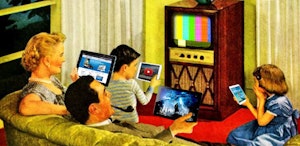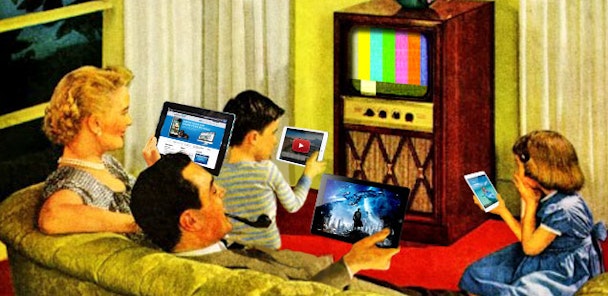IAB study claims ‘TV is no longer the dominant screen’
A consumer habits survey released today (11 February) shows that only half of all individuals classify their TV as the focal point of their living room, with mobile devices connected to the internet now the main point of interaction during consumers’ time.


The IAB study, called ‘Real Living’, charts the rise of internet-connected devices using a mix of on-device tracking, self-reported behaviours, plus biometric data to debunk two “key myths” in the world of media consumption. These are that TV is the dominant screen in the living room, and that that people cram non-TV related behaviour into the ad breaks.
The study, which saw research outfit Sparkler monitor the activity of over 1,000 participants, plus incorporate behavioural data from the National Grid and British Gas, claims that only half of all people say TV is the focal point of their living room.
It also claims that 70 per cent of participants ordinarily used a connected device while watching one, and that in the 16-34 demographic – a key target for many advertisers – this rises to 87 per cent, with multi device activity peaking between 6-9pm. In addition, one third (34 per cent) of participants check emails while watching the screen, 31 per cent use Instant Message (IM) services or text, while viewing the TV and 25 per cent shop online.
The biometric data revealed that about 60 per cent of the time a person is most highly engaged during an evening TV session is in non-TV related activity, such as using a digital device or talking to someone.
Tim Elkington, the IAB’s CSO, said: “Second screening is ingrained to such a degree that all screens are now equal, there’s no hierarchy, only fragmentation of attention – actually switch-screening is a much more accurate term.
“Furthermore, entertainment is only a small part of the living room media activity. It’s now a multifunctional space where people jump between individual and group activities, be it shopping, social media, emails, work or messaging.”
In addition, the study also challenges the widely held belief that people cram non-TV related behaviour into the ad breaks. Quite simply, this is no longer valid, as the incidence of checking emails, etc., is consistent during the broadcast of TV programming and ad breaks.
The device tracking element of the study showed that the use of IM services is only 1 per cent higher during ad breaks during TV programing. In fact, there was actually more online activity per minute during a programme than an ad break, according to the study.
Furthermore, the declining “kettle power surge” during ad breaks in peak TV occasions over the last 25 years provides more evidence of the change in the traditional rhythm of the living room. During the biggest TV event in 1990 – England’s World Cup semi-final against West Germany – National Grid data compiled by British Gas shows a power surge equivalent to 1.12 million kettles boiling at the same time immediately after the match.
However, in 2014’s biggest TV event – England’s World Cup match against Uruguay – the power surge was the equivalent of only 410,000 boiling kettles.
Elkington added: “Connected devices and the realities of modern life mean behaviour in the living room is no longer determined by TV programmes and ad breaks, it is determined by the natural rhythm of device usage.”
Among the various activities people do during an ad break, the one they do most often is going online via a connected device, with over a third (35 per cent) doing so, followed by talking to someone in the room (15 per cent), leaving the room (13 per cent), and changing the channel (8 per cent).

